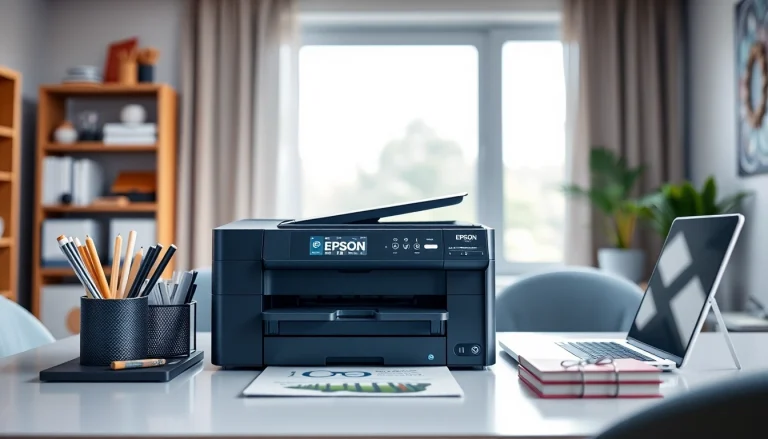
Understanding On-Site Videography
In today’s fast-paced digital world, the capability to capture compelling video content in real-time has become increasingly essential for businesses and organizations. This is where On-Site Videography comes into play. This form of videography allows content creators to produce high-quality videos at the location of the event or project, ensuring authenticity and immediacy that pre-produced videos simply cannot achieve.
What is On-Site Videography?
On-Site Videography refers to the practice of filming video content at the precise location where an event or activity is occurring. Unlike traditional videography, which often involves studio setups and scripted performances, on-site videography captures genuine moments in their natural context. This could include recording corporate events, training sessions, social gatherings, interviews, or other spontaneous activities. The goal is to create engaging video content that reflects real-life interactions and events.
The Importance of On-Site Videography
The importance of On-Site Videography lies in its ability to forge a strong connection between the audience and the content. This immediacy helps to communicate authenticity, fostering trust and engagement. Furthermore, as viewers increasingly gravitate towards video content, having the ability to capture and share high-quality visuals in real-time presents valuable opportunities for businesses to engage their audience effectively.
Common Uses of On-Site Videography
On-Site Videography is versatile and can be employed in numerous contexts. Some common applications include:
- Corporate Events: Documenting conferences, seminars, and workshops to create promotional materials or training resources.
- Live Performances: Capturing the essence of concerts, theater productions, and dance performances for later distribution.
- Marketing Campaigns: Producing targeted advertisements and social media content that resonates with viewers.
- Interviews: Conducting video interviews with key stakeholders, experts, or customers to highlight experiences or insights.
Essential Equipment for On-Site Videography
To execute an effective on-site video shoot, a careful selection of equipment is crucial. Below are the essential tools that every videographer should consider.
Cameras and Lenses for Effective Shooting
Choosing the right camera and lenses plays a significant role in achieving high-quality visuals. Professional DSLRs or mirrorless cameras equipped with 4K capabilities are often preferred due to their versatility and image quality. Additionally, selecting a range of lenses—such as wide-angle for expansive shots and telephoto for detailed close-ups—can enhance storytelling through varied perspectives.
Audio Equipment for Clear Captions
Sound quality is just as crucial as video quality, especially in documenting speeches or interviews. Utilizing external microphones, such as lapel mics or shotgun mics, can significantly improve audio clarity. Investing in portable audio recording devices also ensures that sound is captured without the interference of background noise.
Lighting Gear for Optimal Visuals
Good lighting is essential for producing visually appealing videos. On-site videographers can benefit from portable lighting setups, such as LED panels or softboxes, to enhance visibility, especially in dimly lit environments. Using reflectors can also assist in bouncing light to create a well-lit subject without overwhelming shadows.
Planning Your On-Site Videography Shoot
Thorough planning is key to executing a successful on-site videography shoot. From setting objectives to scheduling, every detail contributes to the final output.
Setting Clear Goals and Objectives
The first step in any videography project should be to define clear goals and objectives. Are you aiming to promote an event, educate an audience, or share testimonials? Understanding the purpose of the shoot informs every subsequent decision, from the type of content to filming style and post-production approach.
Creating a Detailed Shooting Schedule
Developing a comprehensive shooting schedule helps to manage time effectively during the shoot, ensuring that all necessary footage and interviews are captured. Including time for setup, breaks, and potential contingencies is prudent for maintaining workflow efficiency. This can also involve coordination with involved parties, like speakers or participants, to confirm availability.
Choosing the Right Location
The selected location should align with the goals of the project and contribute to the storytelling aspect. Factors to consider include lighting conditions, sound quality, and accessibility for equipment. It’s advisable to conduct a site visit ahead of time to scout the location and address any potential challenges that may arise during filming.
Capturing High-Quality On-Site Videography
With ample planning in place, the focus shifts to capturing stunning visuals that resonate with viewers. Employing the right techniques is essential in achieving this objective.
Techniques for Professional Videography
Incorporating techniques such as the rule of thirds, appropriate framing, and dynamic shot selection can elevate the quality of your footage. Experimenting with various shot types (wide, medium, close-up) can add dimension to the narrative, while smooth panning and tracking will lend a professional touch to the final product.
Tips for Working with Subjects
Creating a comfortable environment for participants helps in capturing authentic interactions. Establishing rapport before filming can lead to more natural performances. Providing guidance on what to expect during the shoot can alleviate any anxiety subjects might feel in front of the camera.
Editing Best Practices to Enhance Content
Post-production is where raw footage transforms into a polished product. Effective editing involves selecting the best clips, adding transitions, audio syncing, and color grading to ensure a cohesive narrative. By incorporating graphics and captions, the final video can provide additional context that enhances viewer engagement.
Evaluating the Success of On-Site Videography
After the project is completed, it’s essential to evaluate the effectiveness of your on-site videography efforts. This process not only measures the project’s success but also identifies areas for improvement on future projects.
Measuring Engagement and Reach
Analyzing metrics such as views, shares, and comments provides insights into how the content is received. Utilizing tools like Google Analytics or social media analytics can help track viewer interaction and uncover which segments of the audience find the content most compelling.
Feedback Mechanisms for Continuous Improvement
Getting feedback from viewers and stakeholders can provide invaluable information on what worked well and what did not. Surveys, interviews, or comment sections are great ways to collect actionable insights that can inform future projects.
Future Trends in On-Site Videography
As technology evolves, so too does the landscape of on-site videography. Emerging trends include the increased use of drones for aerial shots, live streaming capabilities, and enhanced audience engagement through interactive video formats. Staying informed about these trends will help content creators to remain competitive and innovative in their projects.






